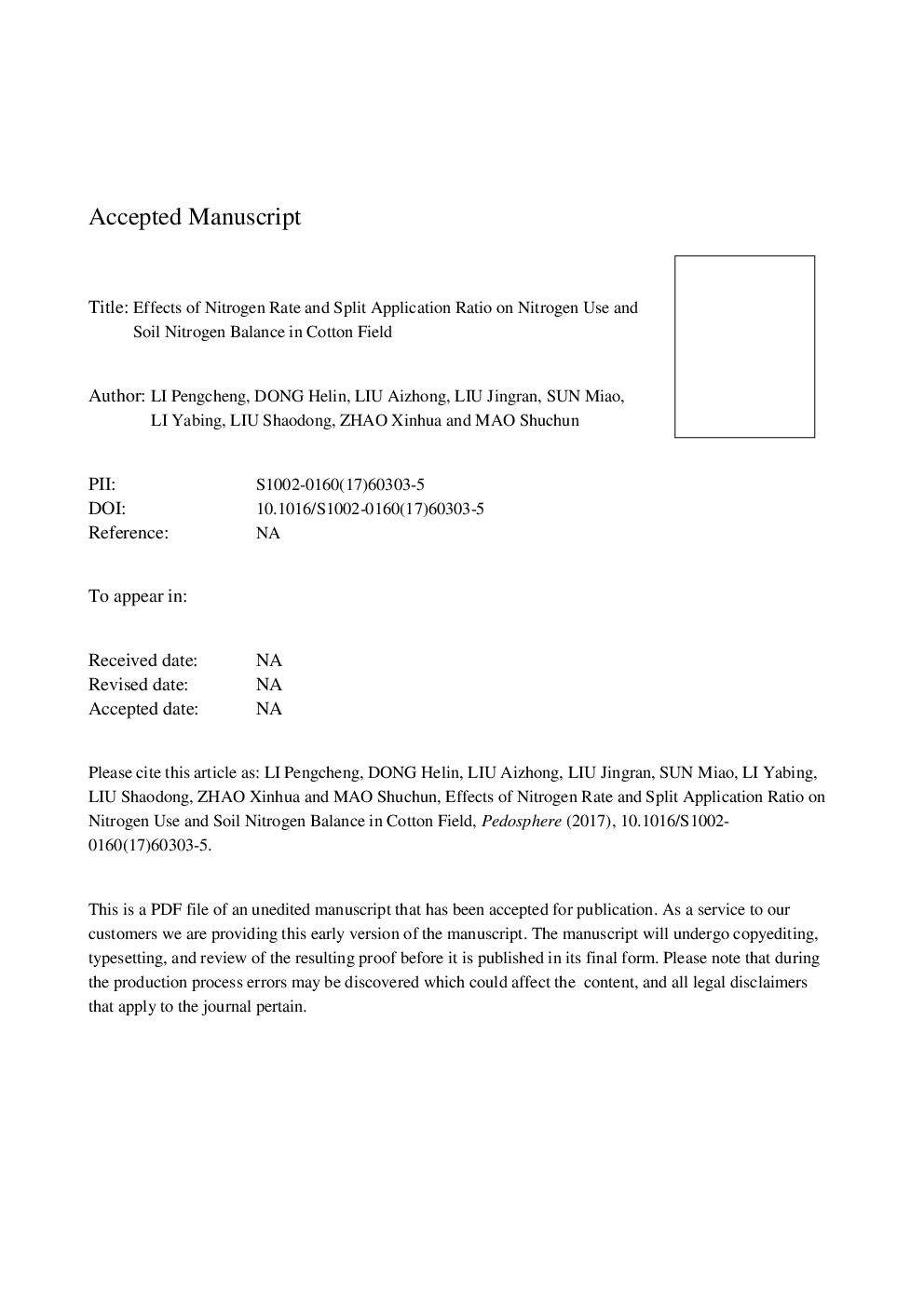| کد مقاله | کد نشریه | سال انتشار | مقاله انگلیسی | نسخه تمام متن |
|---|---|---|---|---|
| 8895471 | 1630325 | 2017 | 13 صفحه PDF | دانلود رایگان |
عنوان انگلیسی مقاله ISI
Effects of Nitrogen Rate and Split Application Ratio on Nitrogen Use and Soil Nitrogen Balance in Cotton Fields
ترجمه فارسی عنوان
تأثیر میزان نیتروژن و نسبت تقسیم کاربردی بر مصرف نیتروژن و توازن نیتروژن خاک در حوزه های پنبه
دانلود مقاله + سفارش ترجمه
دانلود مقاله ISI انگلیسی
رایگان برای ایرانیان
کلمات کلیدی
موضوعات مرتبط
علوم زیستی و بیوفناوری
علوم کشاورزی و بیولوژیک
دانش خاک شناسی
چکیده انگلیسی
The Yellow River valley is one of the three largest cotton production areas in China. An experiment was performed in cotton fields of Anyang, China from 2013 to 2014 to investigate the effects of nitrogen (N) application rate and the ratio between basal and topdressing N fertilizer on N balance in a soil-plant system, N use efficiency, and cotton yield. Five N application rates as treatments were applied with the same split application ratio. Half of the N (50% basal fertilizer) was applied at pre-planting and the other half (50% topdressing fertilizer) at the initial flowering stage. These treatments were: zero N (N0, control), 90 kg N haâ1 (N90 (5/5)), 180 kg N haâ1 (N180 (5/5)), 270 kg N haâ1 (N270 (5/5), a reduced N rate), and 360 kg N haâ1 (N360 (5/5), a conventional N rate). Additional 2 split application ratios as treatments were applied with the same N rate of 270 kg N haâ1. The split application ratios between basal N and topdressing N were 30%:70% (N270 (3/7)) and 70%:30% (N270 (7/3)). Results demonstrated that soil NH4-N content in the 0-60 cm layer and NO3-N content in the 0-20 cm layer increased with increased N rate at the squaring and boll-opening stages and then decreased to lower levels at the initial flowering and harvest stages. Soil NO3-N content in the 20-60 cm layer after the initial flowering stage increased with the increase of topdressing N rate. Soil apparent N surplus varied at different growth stages, while the soil apparent N surplus over the entire growth period exhibited a positive relationship at N rates over 180 kg haâ1. Seed cotton yield of N270 (3/7) was the highest of all treatments. Plant N uptake, N agronomic efficiency, and apparent N recovery efficiency of N270 (3/7) were significantly higher than those of N270 (5/5) and N270 (7/3) in both growing seasons. These suggest both economic and ecological benefits in cotton production in the Yellow River valley could be created, by appropriately reducing total N application rate and increasing the ratio of topdressing to basal N fertilizer at the initial flowering stage.
ناشر
Database: Elsevier - ScienceDirect (ساینس دایرکت)
Journal: Pedosphere - Volume 27, Issue 4, August 2017, Pages 769-777
Journal: Pedosphere - Volume 27, Issue 4, August 2017, Pages 769-777
نویسندگان
Pengcheng LI, Helin DONG, Aizhong LIU, Jingran LIU, Miao SUN, Yabing LI, Shaodong LIU, Xinhua ZHAO, Shuchun MAO,
